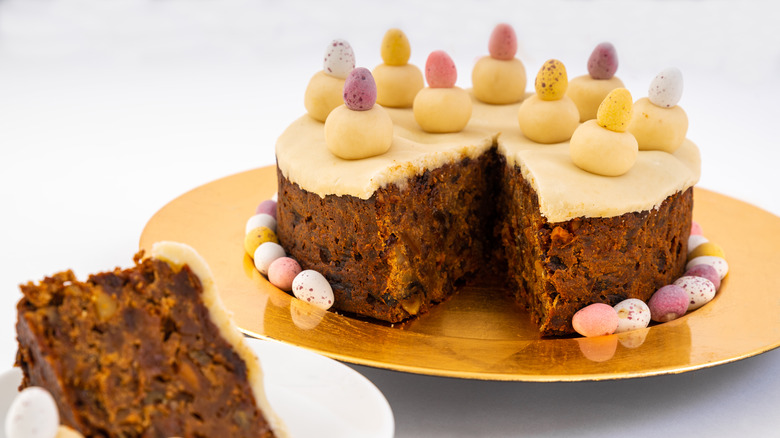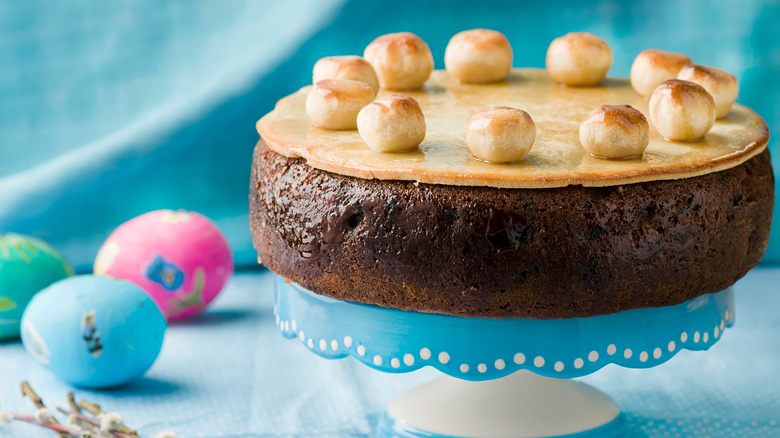Why We Eat Simnel Cake On Easter
If you celebrate Easter, there are some foods you're probably used to eating on the holiday. Chances are you've had plenty of hard-boiled eggs, repurposed from an Easter egg hunt, along with a lavish Easter ham served up with all the fixin's. Then, of course, there's all of the candy that you can find in an Easter basket, from jelly beans and marshmallow Peeps to hollow chocolate bunnies and Jordan almonds.
Aside from these popular Easter eats, many still serve more traditional foods, like simnel cake. Now, some of you may be wondering — "what is simnel cake?" If you live in America, you may not have heard of this dish. Simnel cake is a widely popular treat around Easter in the United Kingdom, but in the U.S., it's less common. The cake itself is actually a fruitcake, and it's both filled with and covered by marzipan, which is an almond paste. The dessert's most notable feature is the 11 marzipan balls that decorate the top. But what's the connection between simnel cake and Easter?
The origins of simnel cake
Simnel cake's prevalence at Easter in the U.K. has to do with the fact that Easter and British Mother's Day fall around the same time each year. In the U.K., Mother's Day falls on the fourth Sunday of Lent, which Christians recognize as "Mothering Sunday" (via Evening Standard). Because Lent is a time of fasting, the British church would lift the restrictions for Mother's Day, and people would celebrate with rich, decadent simnel cake.
These days, the cake's appearance makes its connection to Easter clear. That's because the marzipan balls on top of the cake actually have religious significance. Each cake is topped with 11 balls, which represent the 11 faithful apostles of Christ. Judas Iscariot is left off because of his betrayal of Jesus (via Good to Know). If you're looking for a new dessert to enjoy on Easter, maybe this year you could try a traditional simnel cake.

